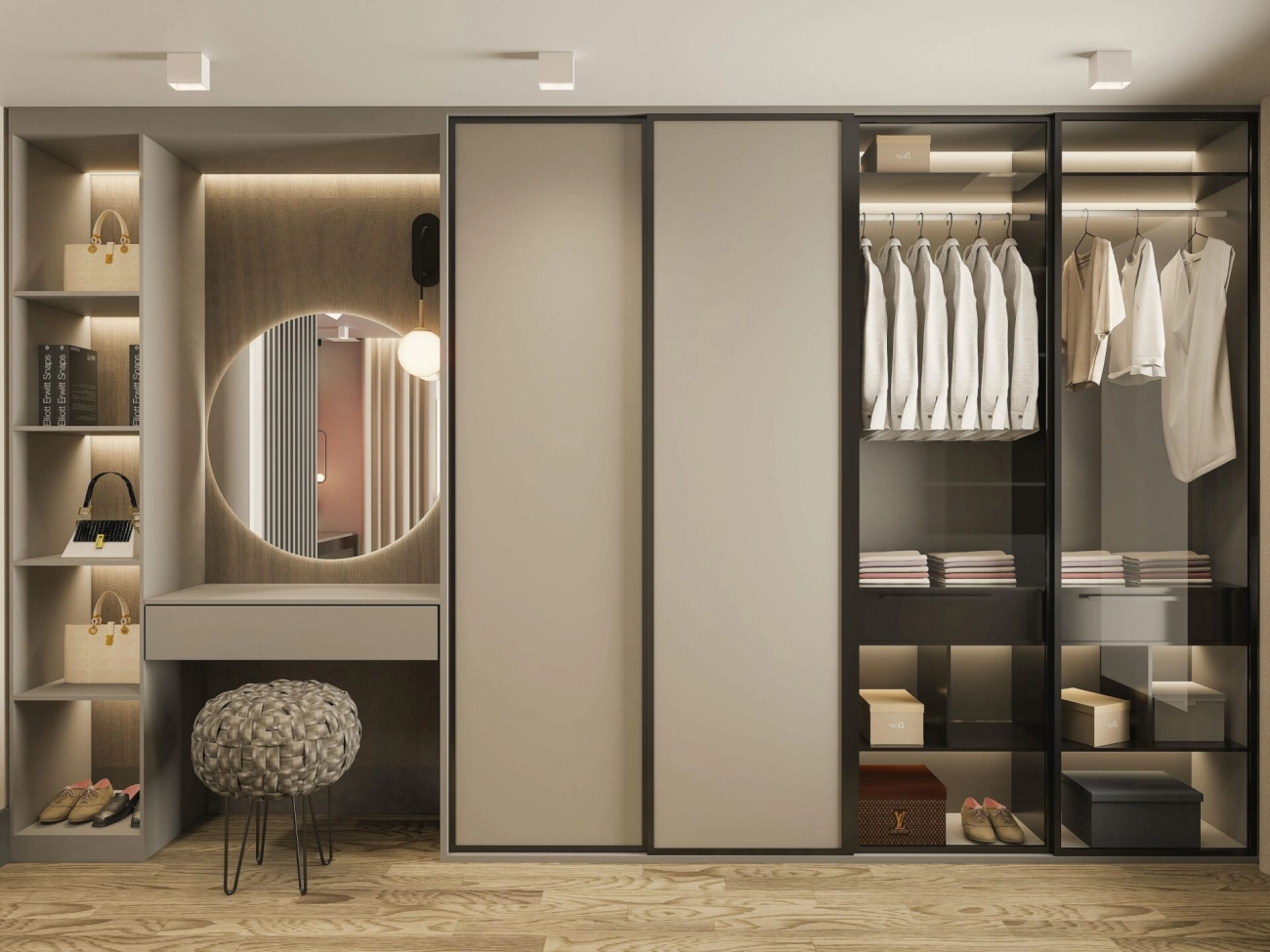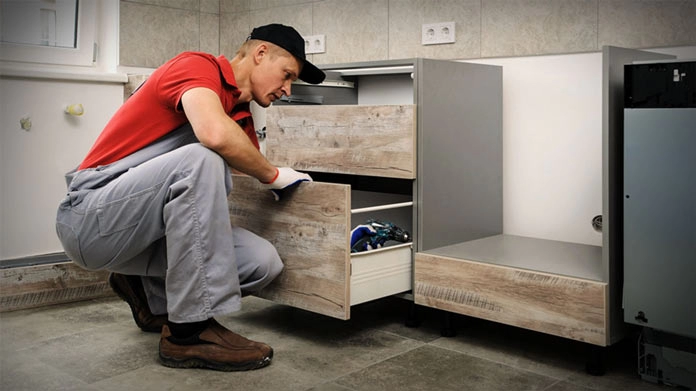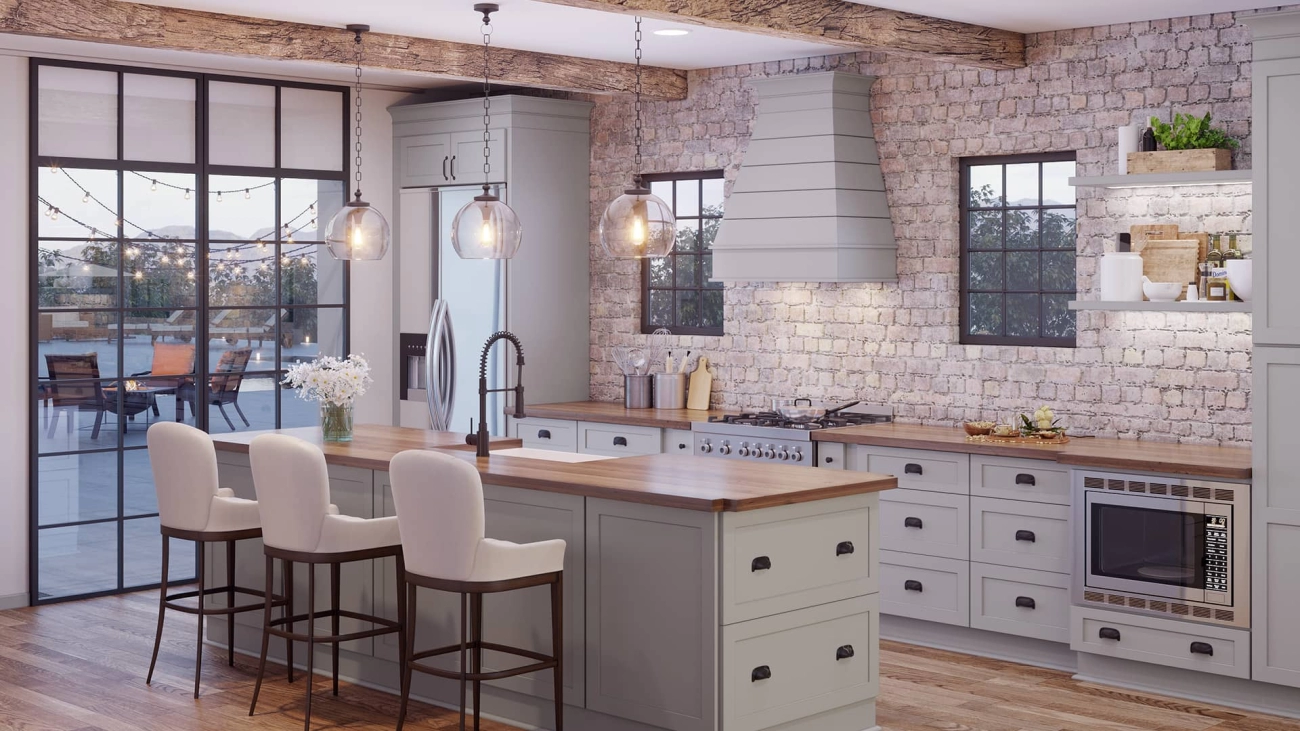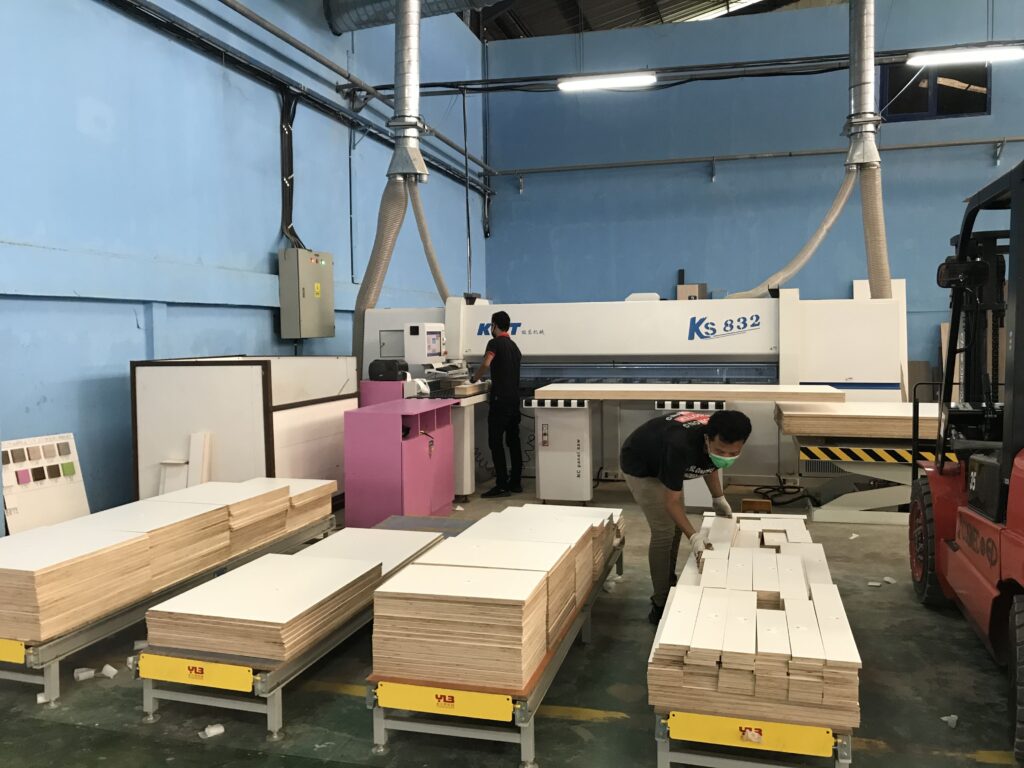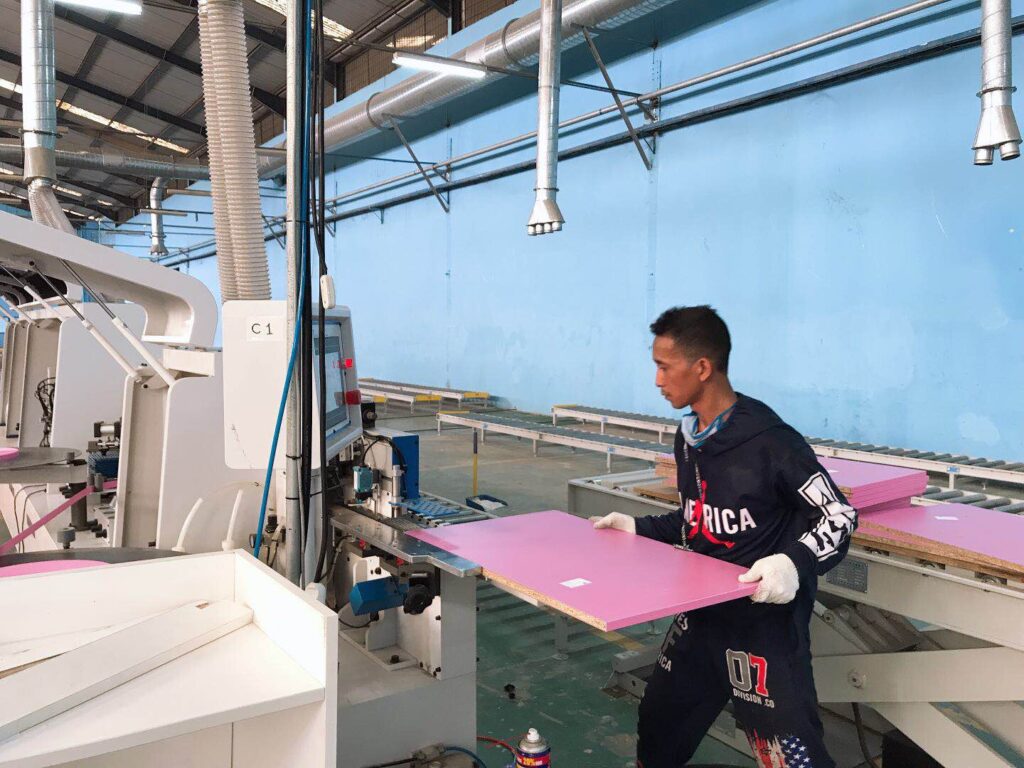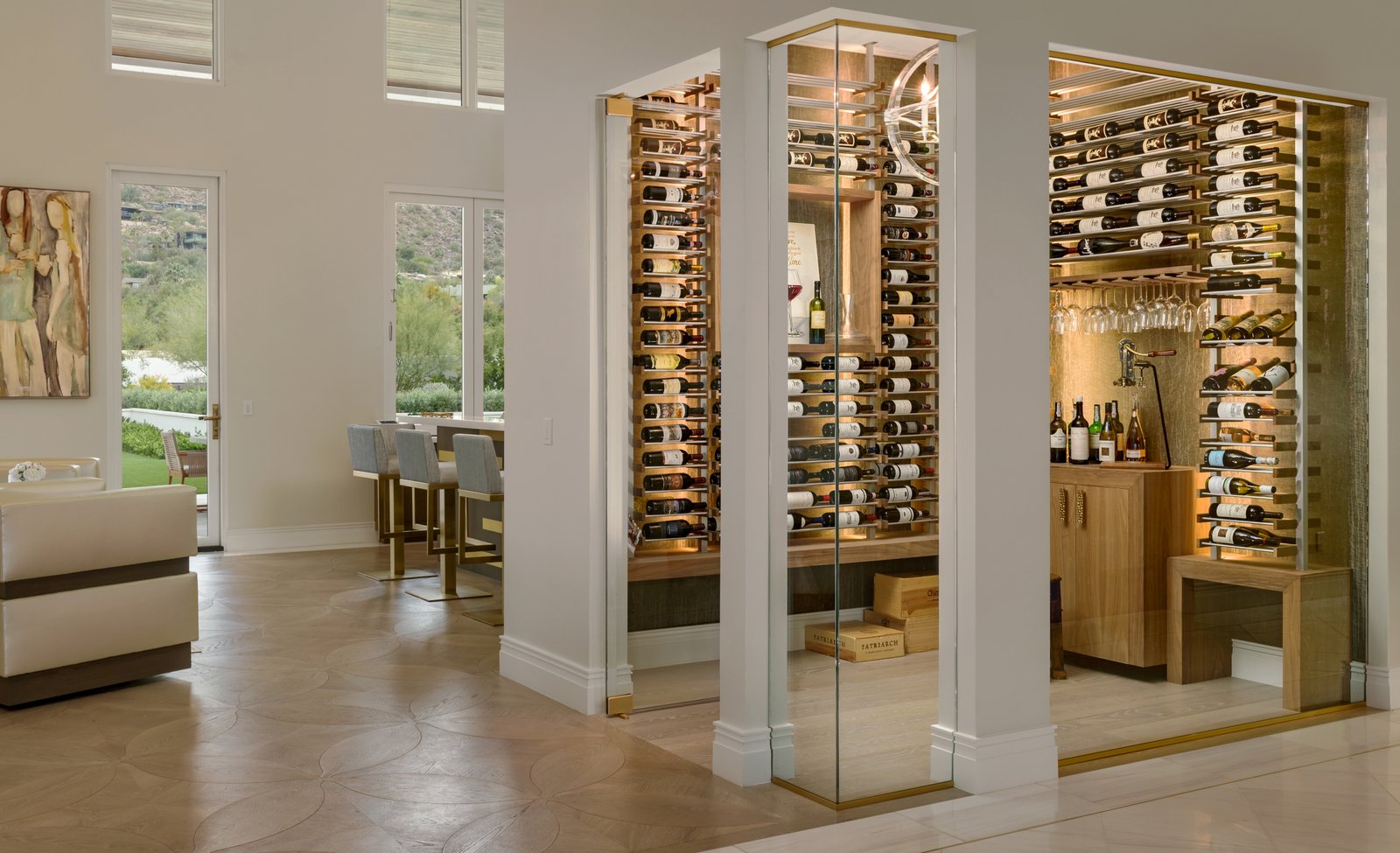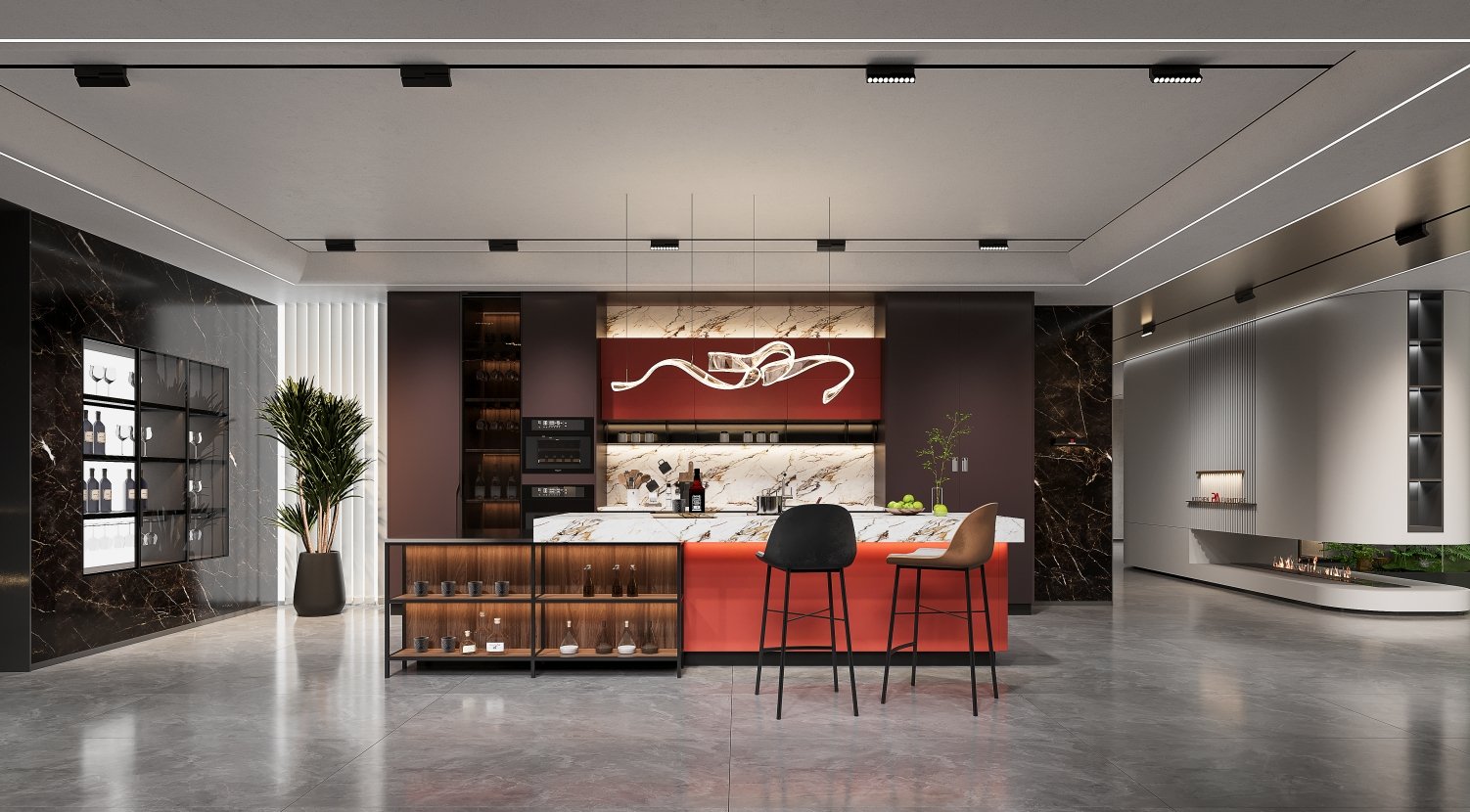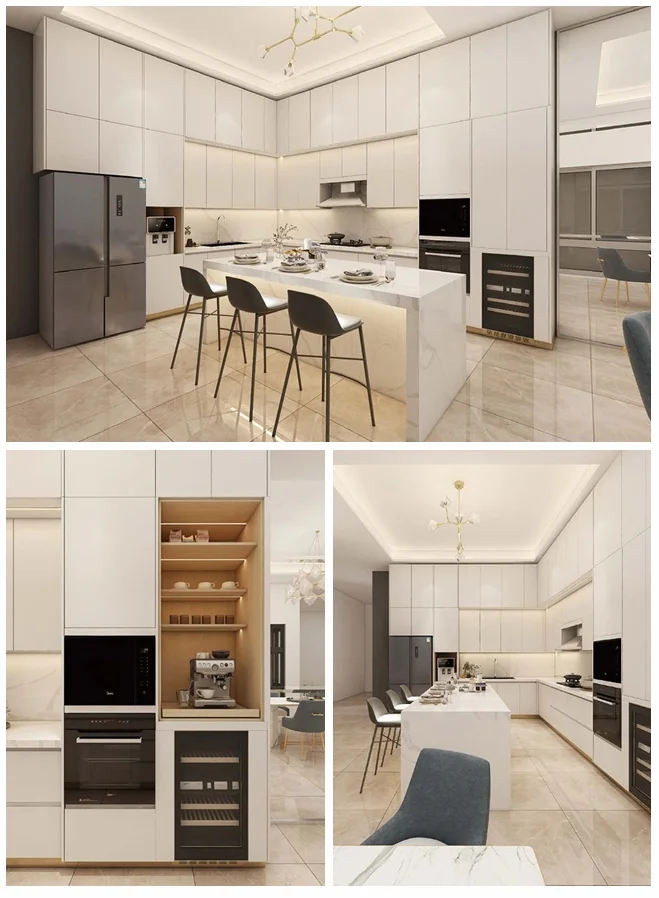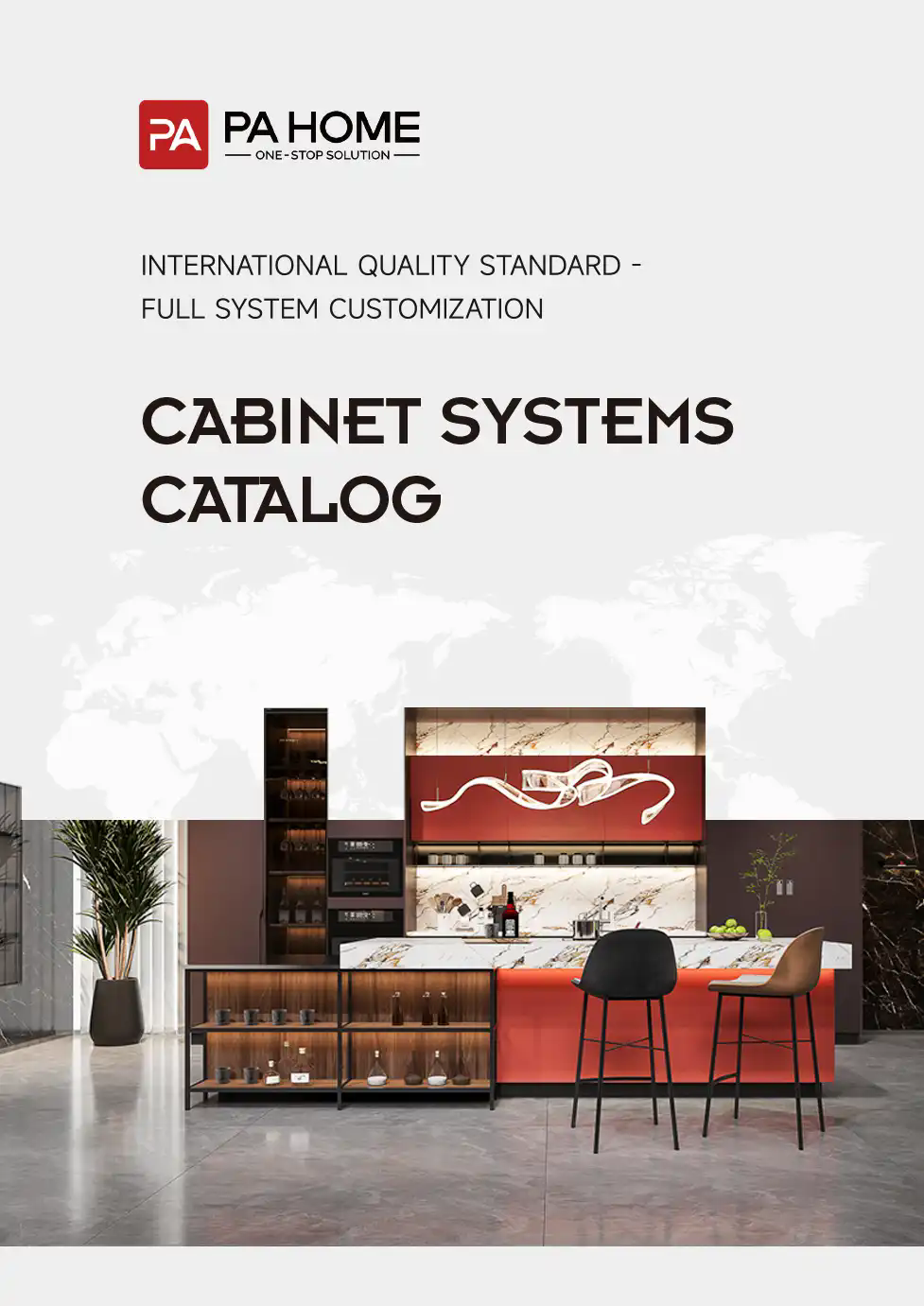If you’re wondering how to start a cabinet business, you’re in the right place. Launching a cabinet-making or sales company can be a lucrative opportunity, but it takes more than just woodworking skills to succeed. From navigating local permits and sourcing quality materials to crafting a solid business plan and marketing to your community, every step matters. In this guide, you’ll get straightforward, practical advice on everything you need to turn your passion for cabinets into a thriving business. Let’s get started!
Understanding the Cabinet Business
Starting with the basics, the cabinet business involves designing, manufacturing, and selling cabinets for various uses. There are mainly three types of cabinet businesses:
- Custom cabinets: Made to exact specifications for individual clients, offering unique designs and finishes.
- Semi-custom cabinets: Built from standard designs but allow some customization in size, style, or materials.
- Stock cabinets: Pre-manufactured in standard sizes and styles, usually sold at lower prices with no customization.
The industry is evolving with trends like eco-friendly materials, smart storage solutions, and modern designs driving demand. Home renovations and new construction fuel growth, especially in the residential market, while commercial projects add steady opportunities.
Key customer segments include:
- Homeowners looking to upgrade kitchens, bathrooms, or storage.
- Commercial clients such as offices, restaurants, or retail spaces.
- Contractors and builders who need reliable cabinet suppliers for projects.
Profit potential varies widely. Custom cabinets can bring higher margins but require skilled craftsmanship and longer production times. Stock cabinets move faster but at tighter margins. Challenges include managing costs for raw materials, staying competitive, and handling fluctuating orders and client expectations.
Understanding the market, customer needs, and the type of cabinet business best suited to your skills and location is critical before diving in.
Conducting Market Research and Validation

Doing thorough local market research is a must before starting your cabinet business. Understanding your community’s needs helps you tailor your products and services, whether that’s custom, semi-custom, or stock cabinets.
Start by analyzing local competition—check out existing cabinet makers, their pricing, product range, and customer reviews. This will help you spot gaps you can fill or areas to improve.
Next, identify your target customers based on local demographics and preferences. Are most homeowners looking for modern kitchen cabinets, or does the commercial sector dominate with contractor bulk orders? Knowing who your clients are helps you focus your marketing and product offerings effectively.
Finally, validate your business idea by testing demand. This could mean surveying potential customers, talking to contractors, or even offering a small pilot project. This step confirms there’s a viable market, reducing risks as you move forward.
For insight on popular cabinet styles and customer preferences, checking trends like those at PA Home can be a helpful guide.
Developing a Comprehensive Business Plan
Creating a solid business plan is a must when starting a cabinet business. This plan acts as your roadmap, guiding your decisions and helping you secure funding. Focus on these key components:
- Executive : Provide a clear overview of your business idea, including what sets your cabinet business apart.
- Company Description: Outline your company’s mission, structure, and the types of cabinets you’ll offer—custom, semi-custom, or stock.
- Market Analysis: Research the local demand, customer preferences, and competition to show you understand your market.
- Organization and Management: Detail your team’s roles, from cabinet makers to sales staff, and explain your organizational structure.
- Financial Planning
- List your startup costs like equipment, materials, and workspace setup.
- Develop pricing strategies that balance competitiveness with profit margins.
- Project your expected revenues and outline cash flow forecasts.
When setting business goals, be realistic. Short-term goals might include reaching a break-even point or landing your first few contracts. Long-term goals could target expanding your product lines or opening a showroom.
A well-crafted business plan sets you up for success and keeps your cabinet business on track as it grows. For inspiration on modern designs, check out these modern kitchen cabinets with dark wood accents that appeal to U.S. customers looking for sleek yet warm cabinetry.
Legal Requirements and Business Setup
Starting your cabinet business the right way means getting all legal boxes checked from the start. Here’s how to set up smoothly:
1.Choose the Right Business Structure
Picking the right structure affects taxes, liability, and control. Consider these common options:
| Business Structure | Pros | Cons |
|---|---|---|
| Sole Proprietorship | Simple setup, full control | Personal liability |
| LLC | Liability protection, tax flexibility | More paperwork, fees |
| Corporation | Strong liability protection, easy to raise capital | Complex, costly to maintain |
LLCs are popular for small cabinet businesses because they balance protection and ease.
2.Register Your Business Locally
You’ll need to:
- Register your business name with your state or county
- Obtain an Employer Identification Number (EIN) for taxes
- Get any local permits or licenses related to cabinet making, woodworking, or retail sales
Check with your city or county clerk’s office to make sure you have everything covered.
3.Understand Zoning and Workspace Rules
Your workshop location matters. Confirm that the space you choose complies with local zoning laws. Some areas restrict manufacturing or retail activities in certain zones. If you’re working from home, make sure residential zoning permits your operations.
4.Insurance for Manufacturing and Installation
Protect your business and clients with the right insurance:
- General liability insurance: Covers accidents or damage during production or installation
- Workers’ compensation: Required if you have employees
- Commercial property insurance: Protects your equipment, tools, and space
Getting proper insurance helps avoid costly surprises and builds trust with customers and contractors.
By tackling these legal and setup steps early, you build a solid foundation that lets you focus on growing your cabinet business confidently. For examples of popular cabinet styles in production, check out custom cabinet ideas that are trending in the market.
Securing Startup Capital and Budgeting

Starting a cabinet business requires a clear view of your startup costs and a solid plan for managing money. Here’s how to get started with funding and budgeting:
1.Estimating Startup Costs
- Equipment: Tools, machinery, and safety gear are essential. This includes saws, routers, clamps, sanders, and finishing tools.
- Raw Materials: Wood, timber, hardware, stains, and adhesives make up a big chunk of expenses. Find reliable timber and wood suppliers for cabinets.
- Workspace: Whether renting or buying, your workshop cost depends on location and size. Factor in utilities and setup costs.
- Employees: If you plan to hire craftsmen or installers, budget for wages, benefits, and training.
2.Funding Options
- Small Business Loans: Banks and credit unions offer loans specifically for manufacturing startups.
- Investors: Look for local investors interested in construction or home improvement businesses.
- Grants: Some local or state government programs provide grants to encourage small business growth in manufacturing.
3.Cost-Saving Tips for Initial Setup
- Start small and scale up as demand grows.
- Buy used or refurbished equipment to reduce upfront spending.
- Build relationships with local suppliers for better prices and credit terms.
- Keep your product line focused to avoid unnecessary material stock.
4.Managing Cash Flow
- Track every expense and income promptly to avoid surprises.
- Set aside a buffer for unexpected repairs or slow sales periods.
- Invoice customers quickly and offer manageable payment terms to keep money flowing.
- Use simple accounting software to monitor financial health regularly.
By understanding your costs and having a clear funding plan, you can keep your cabinet business financially stable from day one.
Establishing Your Workshop and Production Process
Choosing the right location for your cabinet workshop is key. Look for a space that’s accessible for receiving materials and delivering finished cabinets. Ideally, you want enough room for machinery, storage, and assembly without crowding. A spot near residential areas or commercial centers can help with quick service and local deliveries.
Next, focus on essential cabinet-making tools and machinery. Basic equipment usually includes table saws, routers, sanders, drill presses, and edge banders. You’ll also need hand tools for finer work. Investing in reliable, quality tools upfront saves time and improves the finish of your cabinets.
Sourcing quality materials matters a lot. Work with timber and wood suppliers that offer consistent grades of hardwoods or plywood. It’s good to build relationships with both local lumber yards and national suppliers to keep costs competitive and ensure steady supply.
Hiring and Training Skilled Staff
To get your cabinet business going strong, you need the right team. Start by figuring out your staffing needs. Typically, you’ll need:
- Craftsmen for cabinet making and finishing
- Installers to handle on-site fitting
- Sales team to connect with customers and contractors
Finding skilled woodworkers and designers can be tough, but look locally and check industry job boards or trade schools. Building relationships with these pros helps with retention.
Once hired, ongoing training is key. Keep your team updated on new materials, tools, and installation techniques. Training boosts quality and efficiency, reducing mistakes and rework. Also, set clear quality control steps to maintain consistent craftsmanship across every project. This attention to detail will help your reputation grow in the competitive cabinet business.
Creating a Strong Brand and Marketing Strategy

Building a strong brand is key to standing out in the cabinet business. Start by crafting a clear brand identity that tells the story of PA Home—what makes us different, our craftsmanship, and our commitment to quality. This helps customers connect with your business on a personal level.
Next, develop a professional website that showcases your portfolio and includes client testimonials. A strong online presence builds trust and makes it easy for potential customers to see your work. Make sure your site is optimized for SEO, targeting local keywords so people near you find your cabinet services when searching online.
Leverage social media platforms like Instagram, Facebook, and Pinterest to show off your latest projects, share design ideas, and engage with your audience. Local advertising—whether through flyers, community events, or trade shows—also helps raise your profile within your area.
Finally, build partnerships with contractors, builders, and interior designers. These relationships can bring steady work and referrals, boosting your cabinet business’s growth.
For design inspiration and cabinet styles, check out PA Home’s range of kitchen cabinets like the modern cream lacquer shaker kitchen cabinets or explore affordable options in our cabinet blog.
Sales Customer Service and Building Client Relationships

Closing sales in the cabinet business takes clear communication and understanding your customer’s needs. Focus on being upfront about pricing and flexible with negotiation—offer package deals or discounts on installation to seal the deal. Always explain what’s included and why your cabinets are worth the price.
Providing top-notch customer service doesn’t end after the sale. Be quick to respond to questions, handle any issues professionally, and offer reliable after-sales support like installation guidance or follow-up check-ins. This builds trust and shows you stand behind your work.
Repeat business and referrals drive growth. Keep customers happy by exceeding expectations and encouraging them to share their experience. Simple moves like thank-you notes or loyalty discounts make a difference. Ask satisfied clients for reviews or referrals to naturally grow your reach.
Managing expectations from the start helps avoid conflicts. Clearly outline your warranty policies and timelines for production and delivery. Transparent communication about what’s covered builds confidence and reduces complaints down the road.
Scaling and Growing Your Cabinet Business
Once your cabinet business is up and running smoothly, it’s important to focus on growth and scaling. Tracking your performance with key performance indicators (KPIs) like sales volume, profit margins, and customer satisfaction helps you spot what’s working and where to improve.
Think about expanding your product lines or services to attract more customers. For example, adding custom closet systems, kitchen islands, or cabinet installation services can boost revenue and set you apart from competitors.
Investing in new technology and automation tools can speed up production and improve quality. CNC machines, inventory management software, and design programs can save time and help you handle bigger orders without sacrificing craftsmanship.
Lastly, explore new local or regional markets. You might target new neighborhoods, commercial contractors, or partner with builders and interior designers in neighboring towns. Expanding your reach can open up reliable new revenue streams and reduce dependence on one market.
Why Cooperate With PA Home ?
Partnering with PA Home for your cabinetry business is a smart choice for several compelling reasons. With over 17 years of expertise in the custom cabinetry industry, PA Home offers high-quality products crafted with cutting-edge Industry 4.0 technology, ensuring superior precision and design. Our strong presence in key international markets, including the UAE, Indonesia, and Saudi Arabia, positions us as a reliable partner for expansion and growth.
PA Home stands out for its commitment to sustainability, with eco-friendly materials such as E1-certified boards and low-VOC finishes. We offer extensive customization options, enabling you to meet diverse client needs while maintaining product excellence. Our streamlined production process and robust logistics capabilities guarantee timely deliveries, making us an ideal partner for large-scale projects. With PA Home, you’ll be supported by a globally recognized brand, offering not only exceptional products but also comprehensive support, from design consultations to after-sales services. Choose PA Home to elevate your business with quality, innovation, and trust.Contact PA Home Now.
FAQs
1. What are the different types of cabinet businesses?
Cabinet businesses generally fall into three categories:
Custom Cabinets: Tailored to exact specifications for individual clients, offering unique designs and finishes.
Semi-Custom Cabinets: Built from standard designs but allow some customization in size, style, or materials.
Stock Cabinets: Pre-manufactured in standard sizes and styles, usually sold at lower prices with no customization.
Each type serves different market needs and has varying profit potentials.
2. How do I conduct market research for my cabinet business?
Effective market research involves:
Analyzing Local Competition: Study existing cabinet makers, their pricing, product range, and customer reviews to identify gaps or areas for improvement.
Identifying Target Customers: Determine whether your primary clientele will be homeowners, commercial clients, or contractors.
Validating Demand: Engage with potential customers through surveys or pilot projects to confirm there’s a viable market for your offerings.
This research helps tailor your products and services to meet local demands effectively.
3. What should be included in a comprehensive business plan for a cabinet business?
A solid business plan should encompass:
Executive Summary: An overview of your business idea and objectives.
Market Analysis: Insights into industry trends, target demographics, and competitive landscape.
Product Line: Detailed descriptions of the types of cabinets you plan to offer.
Marketing Strategy: Plans for promoting your business and attracting customers.
Operational Plan: Logistics of production, supply chain management, and staffing.
Financial Projections: Estimated startup costs, revenue forecasts, and profitability timelines.
This plan serves as a roadmap for your business and is crucial for securing funding.
4. What are the key steps to legally establish a cabinet business?
To legally set up your cabinet business:
Register Your Business: Choose a suitable business structure (e.g., sole proprietorship, partnership, LLC) and register with local authorities.
Obtain Necessary Permits and Licenses: Depending on your location, you may need specific permits for manufacturing and selling furniture.
Comply with Tax Regulations: Register for tax identification numbers and understand your tax obligations.
Set Up Financial Systems: Open business bank accounts and set up accounting systems to manage finances.
Ensuring legal compliance is essential for smooth operations and avoiding potential legal issues.
5. How can I effectively market my cabinet business?
Marketing strategies include:
Building an Online Presence: Create a professional website showcasing your products and services.
Utilizing Social Media: Engage with potential customers through platforms like Instagram, Facebook, and Pinterest to showcase your designs.
Networking: Attend industry events, trade shows, and local business gatherings to connect with potential clients and partners.
Offering Promotions: Provide introductory offers or discounts to attract initial customers.
Consistent and targeted marketing efforts can help establish your brand and attract a steady stream of clients.

